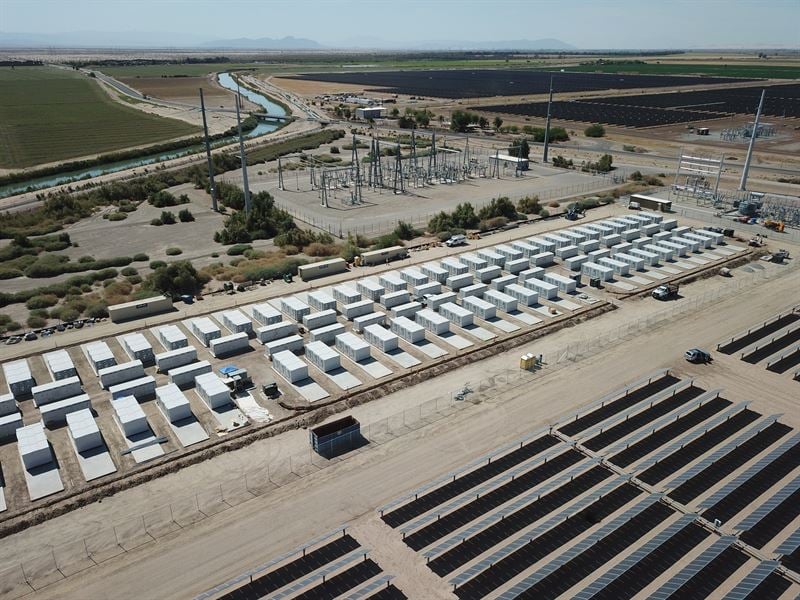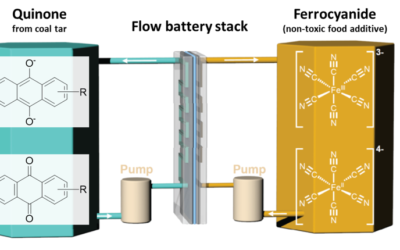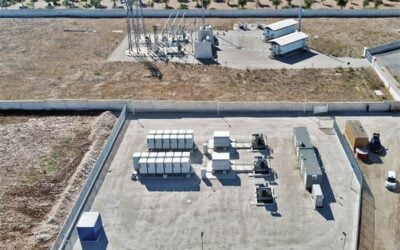
The battery storage sector is about to enter its first ever phase of large-scale augmentations of systems as they reach 3-5 year degradation points and there are questions over how this will pan out, a representative of Burns & McDonnell told Energy-Storage.news.
“Most battery storage projects will add or replace battery capacity within the first three to five years as those existing batteries degrade, typically by 5-15% in that period. There are a lot of questions as we hit this first round of augmentations because we really haven’t seen augmentations executed in a major way yet,” said Jason Barmann, Energy Storage Technology Manager for the engineering, procurement and construction (EPC) firm.
Enjoy 12 months of exclusive analysis
- Regular insight and analysis of the industry’s biggest developments
- In-depth interviews with the industry’s leading figures
- Annual digital subscription to the PV Tech Power journal
- Discounts on Solar Media’s portfolio of events, in-person and virtual
Or continue reading this article for free
Barmann agreed that since the big ramp-up in utility-scale battery storage deployments has been over 2020-2022, the coming few years will be the first big wave of augmentations.
Over 2020, 2021 and 2022 the UK deployed 300MWh, 600MWh and 800MWh respectively, each a record-breaking figure, while the US did 9.5GWh and 12GWh in the last two years respectively (UK figures from Solar Media’s Market Research team and US figures from the American Clean Power Association).
“Sometimes integrators will provide all of the controls along with a system so there is a question around how you get that upgraded. Companies will also ask themselves if they had a pleasant experience with their integrator or if they might be looking to somebody else to provide the augmentation? Sometimes that augmentation is a contracted capacity for the system integrator, sometimes it isn’t,” he said.
“What happens if their battery price goes up faster because they don’t have an agreement in place, then the next company (that comes in for the augmentation) will be asking how does that all work?”
“The chemistries used for the initial project might be different to the ones used for the augment. And so they’ll have different profiles, different control methodologies, different performance, different energy density, everything will just be marginally different.”
He also said there is an issue with how fast companies doing system integration are scaling up and it’s becoming harder to take learnings from one job to the next as jobs are done sequentially rather than one after the other. There could also be a dilemma over where to focus resources on the part of the system integrator, he added.
“I think people are much more interested in building new big large projects than augmenting smaller ones. So where’s the focus going to go from the core members of their team?”
“And some manufacturers have products that are easily adaptable for augmentation. Others have concepts but they don’t have a product out there that you go look at, so it’s more conceptual in nature.”
Batteries can sometimes be decommissioned even earlier than three to five years for a variety of reasons. Just this week, Energy-Storage.news reported on a theft incident at a large-scale project in California owned by Terra-Gen. The company revealed to Energy-Storage.news that 1.5MWh of stolen battery packs were in fact decommissioned and awaiting transportation, just one year after the project was energised.
Burns & McDonnell has deployed over 40GWh of battery storage projects to-date. Executives from the firm recently contributed to an end-of-year Q&A for 2022.
Energy-Storage.news’ publisher Solar Media will host the 5th Energy Storage Summit USA, 28-29 March 2023 in Austin, Texas. Featuring a packed programme of panels, presentations and fireside chats from industry leaders focusing on accelerating the market for energy storage across the country. For more information, go to the website.






